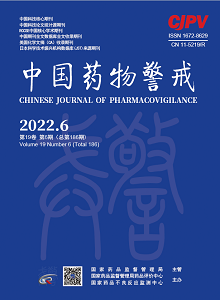|
|
Effects of Polygonum multiflorum extract on rat kidneys based on transporters
WANG Qi, YANG Jianbo, WANG Ying, MA Shuangcheng, WEN Hairuo
2022, 19(6):
626-629.
DOI: 10.19803/j.1672-8629.2022.06.09
Objective To explore the effects of long-term administrations of Polygonum multiflorum ethanol extract (PME) and water extract (PMW) on kidneys of rats. Methods PME and PMW were administered to rats via oral gavage for 42 days, and the biochemical indexes as well as renal pathological changes were examined. The expression levels of major kidney transporters (Oat1, Oat2, Oct2, Mrp2, P-gp) after administration were detected, and the mechanism of Polygonum multiflorum-induced renal injury was analyzed in terms of transporters. Results After the administration of PME and PME, the biochemical indexes of serum in the PME group, including blood urea nitrogen (BUN), creatinine (CRE), total protein (TP) and albumin (ALB), were significantly increased (P<0.01). In the PMW group, BUN, CRE and TP were significantly increased (P<0.01), but the increase in ALB was not statistically significant (P>0.05). Renal histopathologic results suggested renal pigmentation in both PME and PMW groups, but renal tubular degeneration was seen in the PME group only. Data on gene expression detection showed that Oat1, Oct2, P-gp and Mrp2 were significantly down-regulated (P<0.01), while Oat2 was significantly up-regulated (P<0.01) in the PME group. In the PMW group, Oat1, Oct2 and Mrp2 were significantly down-regulated (P<0.01), but Oat2 was significantly up-regulated (P<0.01), and the change in P-gp was not statistically significant (P>0.05). Conclusion After a long-term medication, both PME and PMW can lead to kidney injury in rats and the effect of PME is more prominent. The mechanism of action is associated with the effect of both extracts on renal transporters. The potential nephrotoxic components may be stilbene glycosides and emodin.
References |
Related Articles |
Metrics
|
